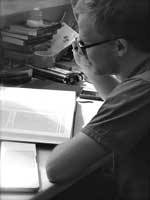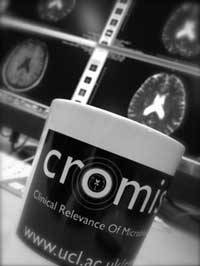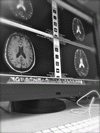Recruitment
Who will be responsible for recruitment and what they be required to do?

Are there any restrictions regarding co-recruitment/ co-enrolment of patients participating in CROMIS-2?
No, there are no restrictions for patients to be enrolled in other studies alongside CROMIS-2 as it is a low risk, observational study. However, it is the Researcher's responsibility to check the criteria for the other studies to ensure there is no conflict with CROMIS-2.
Is there a timeframe from how long the patient has experienced a stroke to when they are recruited to Study I or Study II?
For study 1 the inception point (starting point) for observation is the commencement of anticoagulation, so there is no limit on how long ago the ischaemic stroke occurred; in practice, however, we do not expect patients to be recruited more than about a month from experiencing a stroke to recruitment. For study II patients must be recruited within a month of their ICH symptom onset.
If a patient is in sinus on admission and then later goes into AF or found to be in PAF, can they be recruited?
Yes, patients with PAF can be included.
Study Documentation
Where can we obtain the study documentation necessary to recruit our patients?
All sites will receive consent forms, freepost envelopes, protocols, patient information leaflets and safe boxes (to send the blood samples safely and securely). CRFs are in paper format at present, but will be electronic. This will allow all Research Practitioners to easily enter CRF data on line via a secure website.
Genetic samples
Do we need to store the genetic (blood) samples that are needed from patients?
You do not need storage for these samples. The blood samples can be sent at ambient temperature to UCL in the safeboxes provided within a week of collection.
When do we have to take the blood sample from the patient, is there a time limit?
We request the blood to be taken on the same day as recruitment. If this is not possible for any reason, please ensure the blood is taken as soon as possible. We request that the samples are sent to the Co-ordinating Centre within 7 days of being taken.
What blood tubes are required for the blood samples, and are they supplied to hospitals by the Co-ordinating Centre?
2 x 4.7ml EDTA purple blood tubes must be filled. Note: A large tube ("Group and Save") is ideal to maximise the quantity and quality of DNA extracted. These tubes are not provided by the Co-ordinating Centre. Funding per patient covers cost towards recruitment and screening and we would expect these to be covered by these funds at each site.
What do we do with the blood samples once they have been taken?
The Co-ordinating Centre supplies each site with Royal Mail Safe Boxes to send the blood samples back in a secure manner.
How we package the blood samples?
The Co-ordinating Centre supplies each site with Royal Mail Safe Boxes to send the blood samples back in a secure manner. (A detailed, step by step guide to taking and sending the blood samples can be found in the Researcher Handbook). For more information please go to the Royal Mail website.
- Carefully label the tubes with patient CROMIS-2 study number and date and time blood sample was taken. Mark the tubes with CROMIS-2 study, in order they are readily recognised as this will help with processing at the chief site.
- Fill in the CROMIS-2 blood taking form with all study number and details of the patient.
- (A detailed, step by step guide to taking and sending the blood samples can be found in the Researcher Handbook. A blood sample collection SOP is also available.
How we package the blood samples?
The Co-ordinating Centre supplies each site with Royal Mail Safe Boxes to send the blood samples back in a secure manner. (A detailed, step by step guide to taking and sending the blood samples can be found in the Researcher Handbook). For more information please go to the Royal Mail website.
Baseline data collection
Is there a time scale that we have to complete the baseline CRF?
Please complete as much as possible as soon as you can; you will usually need to wait for discharge until the drug section can be completed in full.
Is a copy of the Doppler report needed in the CRF?
Doppler stenosis is entered into the CRF but original report kept in CRF/site file. A copy is NOT required to be sent to the Co-ordinating Centre.
 If a patient comes in and on ECG had sinus rhythm but then went on to have a 24 hour tape and were found to have PAF, and the consultants plan on starting warfarin, are they eligible for study I (AF) even if it is not seen on ECG? Also, is a copy of the 24 hour tape needed or just the part where the AF is shown?
If a patient comes in and on ECG had sinus rhythm but then went on to have a 24 hour tape and were found to have PAF, and the consultants plan on starting warfarin, are they eligible for study I (AF) even if it is not seen on ECG? Also, is a copy of the 24 hour tape needed or just the part where the AF is shown?

Any AF in context of ischaemic stroke is acceptable for the study, including PAF. It needs to be shown either on a rhythm strip / monitor or on an ECG and oral anticoagulation must be planned.
The CRF was originally completed at time of recruitment, and so the answers to some questions under Section 7 management have now changed as the patient has been on the ward for some time. For example, 'Was anticoagulation commenced at time of completing form?' This was marked 'No', at the time of recruitment, but the patient is now on warfarin - What should we do?
Enter the situation at the time the form was finally completed.
The baseline CRF requests discharge meds and Modified Rankin Score. Is that from the acute hospital or at the end of the patient's stay if they go to a community hospital?
The discharge medication and Modified Rankin Score is to be completed at the time of acute hospital discharge.
On the baseline CRF it says to keep a copy of the ECG and ECHO in the site file, do we not need to send the Co-ordinating Centre copies?
Keep the ECG and ECHO copies in your data collection file, along with the CRF that will is to be kept on file in that folder. This way all the information for the patient is kept together. We intend to audit source data at some sites.
What scores are required for the NIHSS, GCS and BP - what they are now or what they were on admission?
The scores entered on the CRF should be at the time the patient was admitted to hospital.
A patient will have been with us for nearly over two weeks on warfarin before transfer to a rehab hospital. Should we collect their INR values?
Please send this information to the Co-ordinating Centre with the CRF. This way INRs during the admission can be captured.
Scales and Scores
If the patient has expressive problems do we allow for this on the MoCA (as the OT's do on our ward) or do we score them as they say it?
When the patient is considered to have severe aphasia, the MoCA can be excluded from the scales and scores with documentation of the reason why.
MRI scans
 What MRI sequences will be required?
What MRI sequences will be required?

A MRI protocol is sent out to all centres prior to starting recruiting, to ensure they are able to provide the sequences required. For a copy of the protocol, please email the Study Co-ordinator OR download a copy.
When do these need to be sent to the Co-ordinating Centre?
These must be sent to the Co-ordinating Centre within 7 calendar days of the scan taking place. This allows the Study team to carry out their quality control procedures to make sure the scan has the required sequences and are usable.
Do patients in study II (ICH) require an MR scan?
No. Patients recruited to study II must either have an MR scan OR a CT scan, whichever is standard clinical practice at the local site. The Co-ordinating Centre accepts either.
Follow up
 Sometimes patients want to see the follow up questionnaires that they will be sent before decided to join the study. Where can get copies of these forms to show patients what they will be required to complete?
Sometimes patients want to see the follow up questionnaires that they will be sent before decided to join the study. Where can get copies of these forms to show patients what they will be required to complete?

These are available here. There is also further information for all patients here. This will evolve over time and provide study updates, information and useful links.
What involvement will sites have with regards to follow up?
The Central Co-ordinating Centre will send out a postal questionnaire to all patients at the appropriate time points. If the Central team do not receive the data, local teams will be asked to assist by telephoning the patient. Please see the Researchers Handbook for more detail, under the Follow Up section. All stroke events will need to be verified and documented by the local team on specific forms (see below).
What happens if the patient has another stroke or dies whilst in the study?
If either the postal OR telephone questionnaire uncovers a positive event during the follow up time period (of 2 years), the local team are responsible for completing a Stroke/TIA or Bleeding Event form (paper copy is available, an electronic form will be available in the near future). Likewise, if the patient dies, a death notification form must be completed and returned to the co-ordinating centre.
 Close
Close

